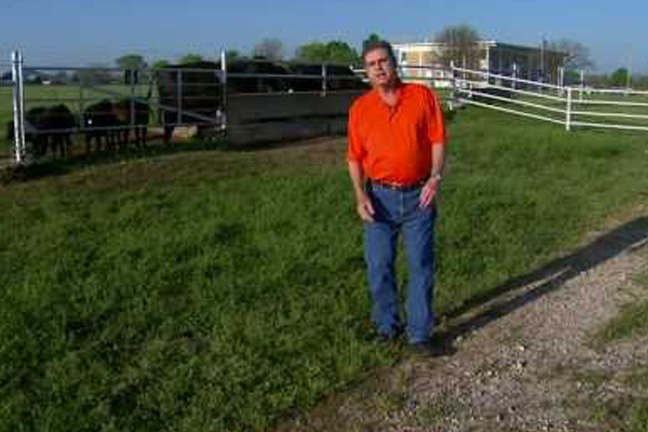
Agricultural News
Keep or Cull Open Replacement Heifers? Selks Cautions Buyers to Beware
Tue, 21 Apr 2015 10:06:17 CDT
 Glenn Selk, Oklahoma State University Emeritus Extension Animal Scientist, writes in the latest Cow-Calf Newsletter.
Glenn Selk, Oklahoma State University Emeritus Extension Animal Scientist, writes in the latest Cow-Calf Newsletter.
For some Oklahoma cow calf operations, the bulls go into the breeding pasture with replacement heifers in mid-April. As the bulls are being removed from the replacement heifers in two months, this would be an ideal time to call and make arrangements with your local veterinarian to have those heifers evaluated for pregnancy after another 60 days. In two months after the breeding season, experienced palpaters should have no difficulty identifying which heifers are pregnant and which heifers are not pregnant (open). Those heifers that are determined to be "open" after this breeding season, should be strong candidates for culling.
Culling these heifers immediately after pregnancy checking serves three very useful purposes.
1) Identifying and culling "open" heifers early will remove sub-fertile females from the herd. Lifetime cow studies were conducted at a USDA experiment station in Montana. Over the span of 23 years, 1589 replacement heifers were exposed to bulls. Over that number of years 266 heifers were found to be "open" after their first breeding season. All of these "open" heifers were kept in the herd for an average of about 4 years. From the 1006 opportunities to become pregnant that followed, only 551 calves were produced. In other words, when the heifers that failed to breed in the first breeding season were followed throughout their lifetimes, they averaged a 54.9% yearly calf crop. Despite the fact that reproduction is not a highly heritable trait, it also makes sense to remove this genetic material from the herd so as to not proliferate females that are difficult to get bred.
2) Culling open heifers early will reduce production costs. If the rancher waits until next spring to find out which heifers do not calve, the winter feed expense will still be lost and there will be no calf to help eventually pay the bills. This is money that can better be spent in properly feeding cows that are pregnant and will be producing a salable product at weaning time.
3) Identifying the open heifers shortly (60 days) after the breeding season is over will allow for marketing the heifers while still young enough to go to a feedlot and be fed for the "choice" beef market. The grading change of several years ago had a great impact on the merchandising of culled replacement heifers. "B" maturity carcasses (those estimated to be 30 months of age or older) are much less likely to be graded choice. Therefore, it is imperative to send heifers to the feedlot while they are young enough to be fed for 4 to 5 months and not be near the "B" maturity age group.
Certainly the percentage of open heifers will vary from ranch to ranch. Do not be concerned, if after a good heifer development program and adequate breeding season, that you find that 10% of the heifers still are not bred. These are the very heifers that you want to identify early and remove from the herd. Resist the temptation to "roll them over" to a fall-calving herd if they have failed to breed in a spring breeding season.
Producers that are buying replacement females (at a quite hefty price) need to be wary of heifers that were exposed to bulls or artificial insemination/clean-up bulls and remain non-pregnant. This is the easiest opportunity to become pregnant that they will have. If they are still open after that first breeding season, they may be infertile at worst, or sub-fertile compared to other heifers. Remember the old Montana data that suggests that they will be 55% calf crop females the rest of their lives.
WebReadyTM Powered by WireReady® NSI
Top Agricultural News
More Headlines...




















